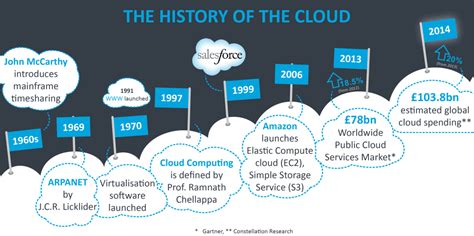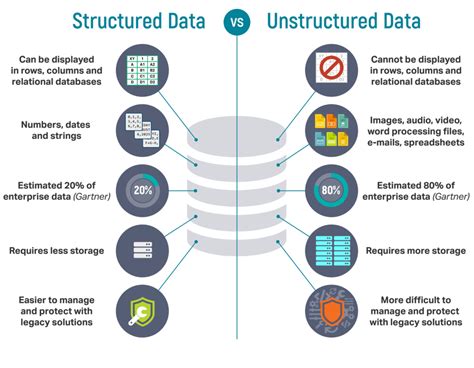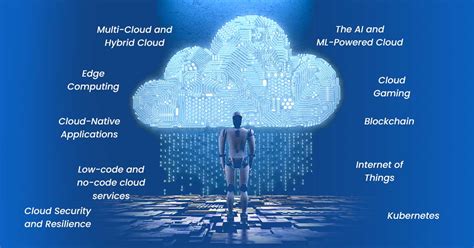Breaking News


Popular News


Explore the evolution of cloud computing technology, from virtualization to big data and security advancements. Learn about future trends in cloud computing.Cloud computing technology has revolutionized the way businesses and individuals store, access, and manage data. As the demand for efficient and scalable IT solutions continues to grow, the evolution of cloud computing technology has played a pivotal role in shaping the digital landscape. In this blog post, we will explore the various aspects that have contributed to the evolution of cloud computing technology.
From the emergence of virtualization technology to the impact of broadband internet connectivity, we will delve into the factors that have propelled the growth of cloud computing. Additionally, we will examine the role of big data in driving innovation in the cloud computing space, as well as the advancements in cloud security that have enhanced data protection.
Finally, we will look ahead to the future trends in cloud computing and how they are shaping the next phase of technological advancements. Join us as we take a closer look at the ever-changing and dynamic world of cloud computing technology.
Contents

Cloud computing has become an integral part of our daily lives, but not everyone understands exactly what it is. Put simply, cloud computing is the delivery of computing services over the internet. Instead of having to run programs and applications on a physical computer or server in your office, you can access them through the internet. This allows for greater flexibility and scalability, as well as cost savings for businesses.
One of the major benefits of cloud computing is the ability to access files and data from anywhere, as long as you have an internet connection. This has revolutionized the way people work, allowing for remote access and collaboration on a global scale. In addition, cloud computing has also enabled the advent of software as a service (SaaS) applications, which are accessible through a web browser without the need for installation.
Another key aspect of cloud computing is its pay-as-you-go model, often referred to as utility computing. This means that you only pay for the resources you use, whether it’s storage, processing power, or other services. This flexibility has made cloud computing an attractive option for businesses of all sizes, as they can easily scale their infrastructure based on demand without the need for significant capital investment.
In summary, cloud computing has transformed the way we access and use technology, providing greater flexibility, scalability, and cost savings for businesses and individuals alike.

Virtualization technology has emerged as a game-changer in the world of IT infrastructure. It allows businesses to maximize the use of their server resources by dividing a single physical server into multiple virtual servers. This not only improves efficiency but also reduces costs and enhances flexibility.
With virtualization technology, companies can run multiple operating systems and applications on a single machine, making it easier to manage and maintain their IT infrastructure. This has revolutionized the way businesses approach server management, providing them with the ability to scale resources up or down as needed.
Moreover, virtualization has paved the way for cloud computing by enabling the creation of virtualized environments that can be accessed remotely. It has become an essential component of cloud infrastructure, allowing for the efficient allocation of resources and the delivery of services over the internet.
In conclusion, the emergence of virtualization technology has transformed the IT landscape, empowering businesses to optimize resources, improve operational efficiency, and embrace the benefits of cloud computing. As technology continues to evolve, virtualization will undoubtedly play a crucial role in shaping the future of IT infrastructure.

The Evolution of Cloud Computing Technology
Impact of Broadband Internet Connectivity
The emergence of broadband internet connectivity has played a crucial role in shaping the evolution of cloud computing technology. With the availability of high-speed internet, users are able to access cloud services and applications with greater efficiency and reliability. This has led to a significant increase in the adoption of cloud-based solutions across various industries and sectors.
Furthermore, the widespread availability of broadband internet has enabled seamless data transfer and communication between different devices and cloud servers. This has facilitated real-time collaboration and remote access to resources, making it easier for organizations to streamline their operations and enhance productivity.
| Benefits | Impact |
|---|---|
| High-speed data transfer | Facilitates quick access to cloud-based applications and services |
| Improved connectivity | Enables seamless communication and collaboration |
| Enhanced scalability | Allows for flexible expansion of cloud resources and storage |
| Efficient remote access | Enables users to work from anywhere with minimal latency |
In conclusion, the impact of broadband internet connectivity on cloud computing cannot be overstated. It has revolutionized the way we access and utilize cloud services, providing a robust foundation for the future development and advancement of cloud-based technologies.

Big data is playing a critical role in the evolution of cloud computing technology. With the exponential growth of data generated by various sources such as social media, IoT devices, and digital platforms, the need for scalable and flexible cloud infrastructure has become more important than ever. Big data analytics have enabled organizations to process and analyze large volumes of data in real-time, leading to the emergence of cloud-based solutions to store, manage, and analyze big data efficiently.
The integration of big data and cloud computing has revolutionized the way businesses handle and derive insights from massive datasets. Cloud platforms provide the necessary resources and infrastructure to store and process big data, while analytics tools and machine learning algorithms enable organizations to extract valuable insights and make data-driven decisions. Furthermore, the scalability and on-demand nature of cloud resources make it possible to handle the massive computational requirements of big data analytics without the need for significant upfront investments in infrastructure.
In addition, big data applications have driven the development of specialized cloud services and storage solutions tailored to handle the unique requirements of big data workloads. Cloud providers offer a range of big data services such as data lakes, real-time data processing, and predictive analytics, empowering businesses to leverage the power of big data without the complexities of managing infrastructure. This convergence of big data and cloud computing has paved the way for innovative solutions in areas such as personalized marketing, predictive maintenance, and business intelligence, driving the transformation of industries and business processes.
| Impact of Big Data in Cloud Evolution |
|---|
| Enhanced data processing capabilities |
| Scalable infrastructure for big data analytics |
| Development of specialized big data services |
| Empowerment of data-driven decision making |

Cloud security has come a long way since its inception, with a number of advancements being made to ensure the safety of data stored in the cloud. As organizations continue to migrate their operations to cloud-based platforms, the need for robust security measures becomes increasingly important. The evolution of cloud security technology has been driven by the growing number of cyber threats and the need to protect sensitive information from unauthorized access.
One of the key advancements in cloud security is the implementation of multi-factor authentication (MFA), which adds an extra layer of security by requiring users to provide multiple forms of verification before gaining access to their accounts. This helps prevent unauthorized access even if login credentials are compromised. Another important development is the use of encryption to protect data both at rest and in transit, ensuring that sensitive information remains secure and private.
Moreover, the rise of cloud access security brokers (CASBs) has provided organizations with greater visibility and control over their cloud applications and data. CASBs help monitor and manage user activity, enforce security policies, and detect and respond to potential threats in real time. This has become particularly crucial as the use of cloud-based services continues to grow, making it more challenging to ensure the security of data and applications.
| Advancements in Cloud Security |
|---|
| Multi-factor authentication (MFA) |
| Encryption |
| Cloud access security brokers (CASBs) |
As the landscape of cyber threats continues to evolve, it is essential for organizations to stay updated with the latest advancements in cloud security to mitigate potential risks and safeguard their critical data effectively.

As cloud computing continues to evolve, there are several emerging trends that are likely to shape the future of this technology. One of the most significant trends is the increasing adoption of edge computing, which involves processing data closer to the source of data generation, rather than relying on a centralized cloud server. This trend is driven by the growing demand for real-time data processing and analysis in fields such as IoT, autonomous vehicles, and augmented reality.
Another important trend is the integration of artificial intelligence (AI) and machine learning into cloud computing services. These technologies are being used to automate and optimize various aspects of cloud operations, including resource allocation, security monitoring, and workload management. As AI and machine learning capabilities continue to improve, they are expected to play an increasingly important role in making cloud computing more efficient and cost-effective.
Furthermore, the rise of serverless computing is another trend that is reshaping the future of cloud technology. Serverless computing allows developers to write and deploy code without having to worry about managing the underlying infrastructure. This approach to cloud computing is becoming increasingly popular because it allows companies to focus on their core business logic without getting bogged down by infrastructure management tasks.
In addition to these trends, there is a growing emphasis on hybrid cloud solutions, which combine public and private cloud services to provide greater flexibility and scalability. This approach allows organizations to seamlessly move workloads between different cloud environments based on their specific requirements and regulatory constraints.

What is cloud computing?
Cloud computing refers to the delivery of computing services, including servers, storage, databases, networking, software, and analytics, over the internet.
What are the benefits of cloud computing?
Some benefits of cloud computing include cost savings, scalability, flexibility, and the ability to access data from anywhere with an internet connection.
How has cloud computing evolved over time?
Cloud computing has evolved from basic infrastructure services to include platform and software services, as well as the development of specialized cloud solutions for various industries.
What are the current trends in cloud computing technology?
Some current trends in cloud computing include the rise of multi-cloud and hybrid cloud environments, serverless computing, and the increased focus on security and compliance.
What are some popular cloud computing providers?
Some popular cloud computing providers include Amazon Web Services (AWS), Microsoft Azure, Google Cloud Platform, and IBM Cloud.
How has cloud computing impacted businesses and industries?
Cloud computing has transformed the way businesses operate by enabling greater flexibility, efficiency, and innovation. It has also had a significant impact on industries such as healthcare, finance, and education.
What does the future hold for cloud computing technology?
The future of cloud computing is likely to involve continued advancements in areas such as edge computing, artificial intelligence, and blockchain, as well as an increased focus on sustainability and environmental responsibility.